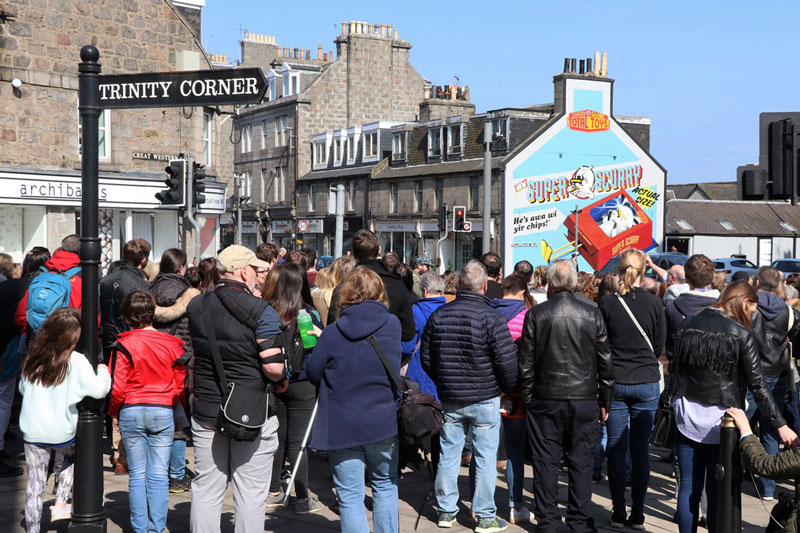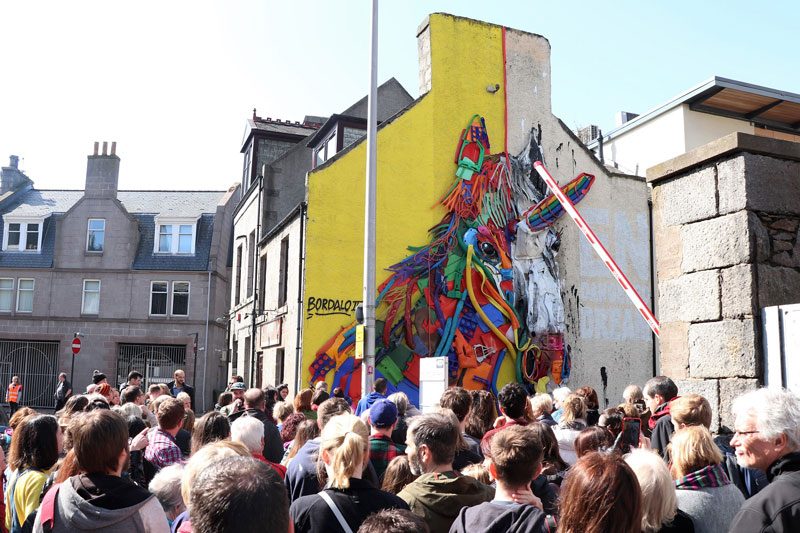I met Jon on a boat. We sailed the Stavanger Bay together during Nuart 2017. Our sail was dressed with an eye chart like the one used by optometrists. Artist Igor Ponosov meant for it to symbolize the distance between public art and its audience; a gap that Jon Reid is definitely working hard to close with his cultural blog “Dancing in the Dark – Creativity & Culture in Aberdeen and Beyond”
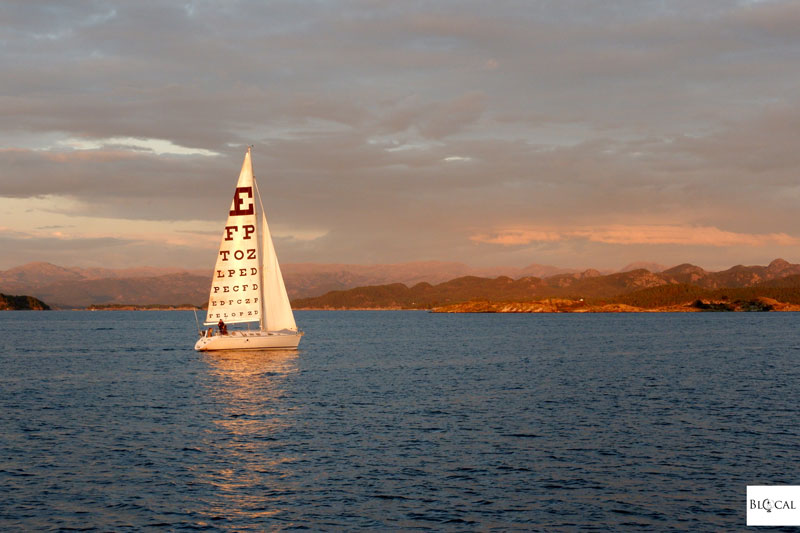
Jon Reid: “I started my blog back in 2008, although I was already documenting street art and graffiti in Aberdeen long before that – but I was keeping those photos for myself. I wasn’t even sharing photos of my own street art, since I had adopted the graffiti mentality of that time. Today, all of the most famous graffiti artists are on Instagram. That’s how you get noticed nowadays, but back then, nobody would have even considered sharing stuff in this manner, because it was so easy to trace it back to you and as soon as you know it, the police are knocking on your door”
Jon’s blog is a 10-year archive of the “cool things that happened in the city”, from which he happily shows off when someone dares to say that nothing happens in Aberdeen. To celebrate his decade-long blogging milestone, Jon organized a show featuring work from talented local artists that have appeared on the blog, as well as his own art.
Jon Reid: “That night, I gave a little speech about why I do what I do and why it’s important to me. I even cried. I was overcome with emotions, because as I glanced around the room I realized that that was the reason why I started blogging to begin with; I was surrounded by these talented, creative people who were making amazing pieces of art, but they weren’t appreciated for what they were doing”
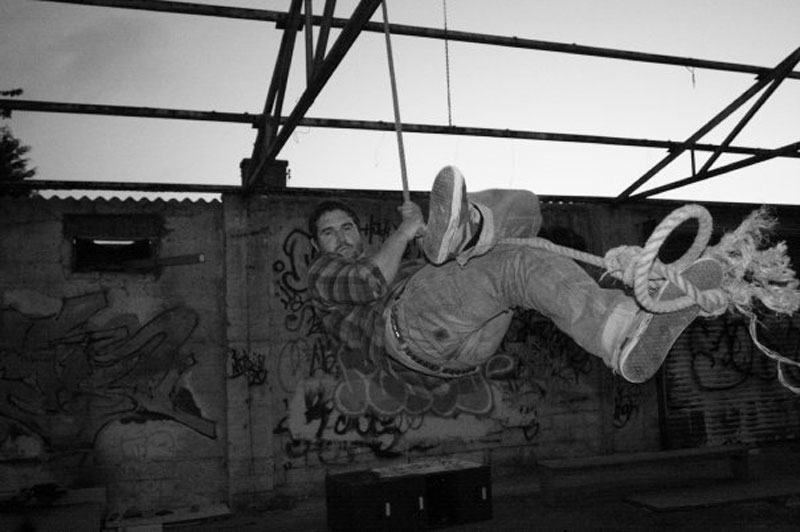
Photo from Jon Reid’s archive
Jon writes about art and culture in Aberdeen with honesty, integrity, and an overflowing enthusiasm that would inspire anyone to visit this highly underrated Scottish city.
Jon Reid: “I’m not an art critic. I write about the stuff I like and I only share the art that I enjoy. I don’t share anything negative, because taking something down takes energy. Rather than doing that, I just ignore it or put it to a side. This allows me to better focus my energy into building something great. I’d rather be the guy who is always excited about stuff than the guy who rips everything apart. Especially because I do this in my spare time, I’m not getting paid for it. It’s really counter-productive to spend an evening writing about something I dislike when there are so many other things I do like in Aberdeen”
Jon has been documenting all kind of cultural events, from gallery shows to performances, with a heavy focus on Aberdeen’s independent street art scene, of which he was a part of back in the day.
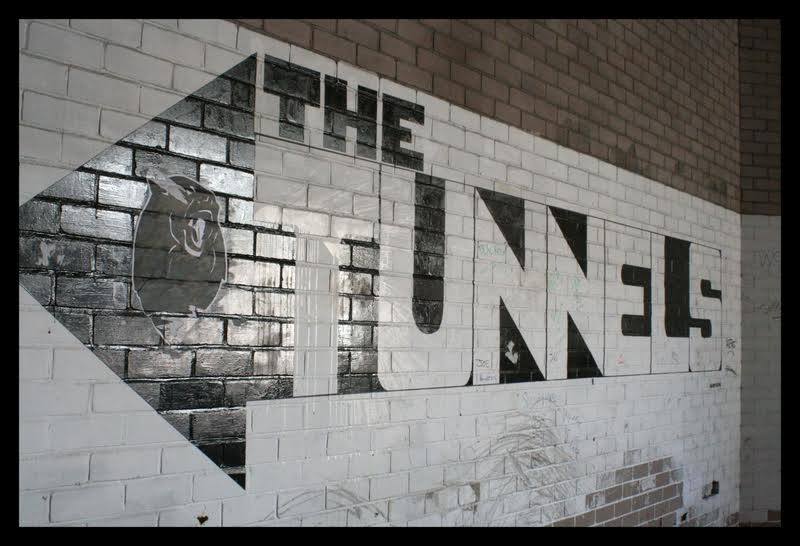
Photo from Jon Reid’s archive
Jon started doing street art in 2007 after a close friend of his passed away. He began by putting up his friend’s iconic posters of a black bear, and shortly after that he felt the urge to make his own art. He wanted to leave something behind, something that would let the world know “he was there.”
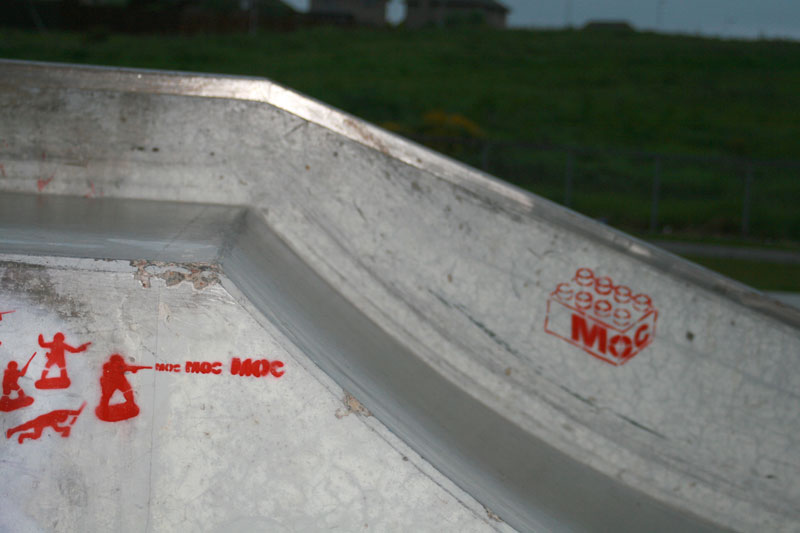
Photo from Jon Reid’s archive
Jon Reid: “I was putting up toy soldiers and Lego bricks: it was only recently when I rationalized that the trauma of losing my friend was so deep that, by putting up toys in the streets, I was trying to regain some of my childhood innocence. I was also attempting to put up things that an adult would walk past and ignore but a kid would identify and stop for a closer look. I was trying to engage with a younger audience”

Photo from Jon Reid’s archive
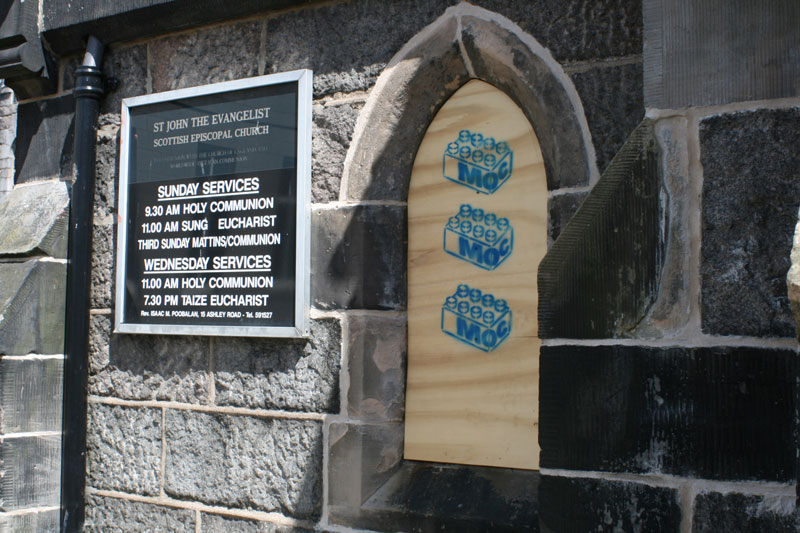
Photo from Jon Reid’s archive
This ”interventionist” approach to street art was very common in the early days of the street art scene in Aberdeen. Aside from a substantial graffiti scene, which Jon never joined because he felt it to be “too hardcore and definitely inaccessible for an outsider,” there was a whole movement of artists putting up their work for the sole purpose of brightening up people’s day. Their only goal was to have fellow Aberdonians stumble upon something unexpected, something that would disrupt their daily grind.
Jon Reid: “People have been making art on Aberdeen’s streets for a long time and even when they might not have had an audience for it. They were doing it solely for the joy of doing it. They didn’t want to show off or make a career out of it”
Take Dymagate’s mini padlocks, for example: proclaiming free love all around the city, they were meant to be taken by passers-by who would then either give them to their loved ones or place them in a different location to catch the eye of fellow romantic souls.
All throughout Aberdeen there were Who is Fakesy!’s rough imitations of Banksy’s stencils, which at that time were fresh news; Craig Barrowman’s paste-ups and interactive installations; the iconic Wolfman stenciled on the yellow grit bin in the midst of a popular skateboarding square; Honk’s painted stones; the early creations of stencil artist Elki, who–back in town for Nuart 2018- painted a large, multi layer piece next to his epic ”piper stencil,” which is one of the oldest street art pieces still visible in Aberdeen.
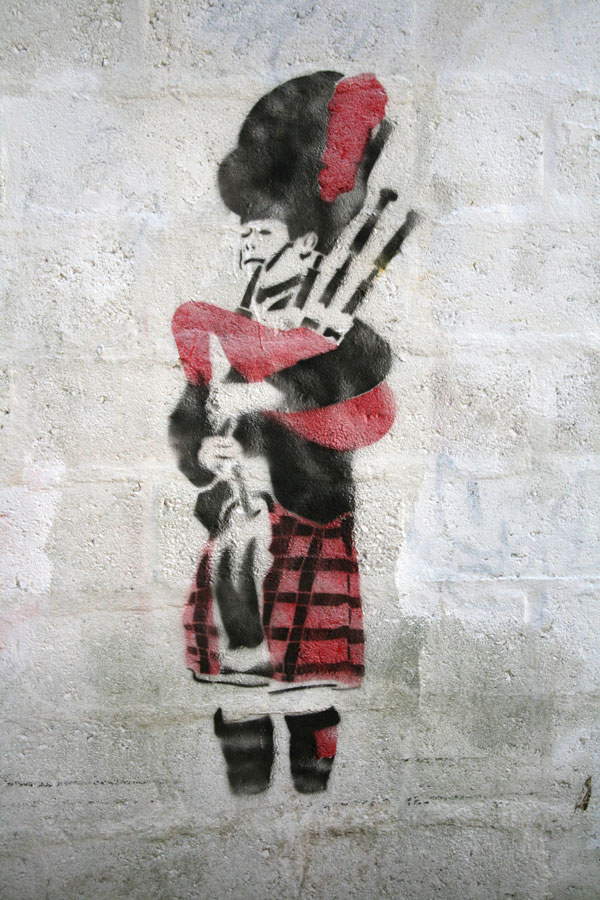
Elki – Photo from Jon Reid’s archive
And there were Jon’s toy soldiers and Lego bricks, which he signed as MoC (standing for “Mood of Collapse”). Besides some installations like the Che Guevara made out of toy soldiers, Jon fully devoted himself to stencils.
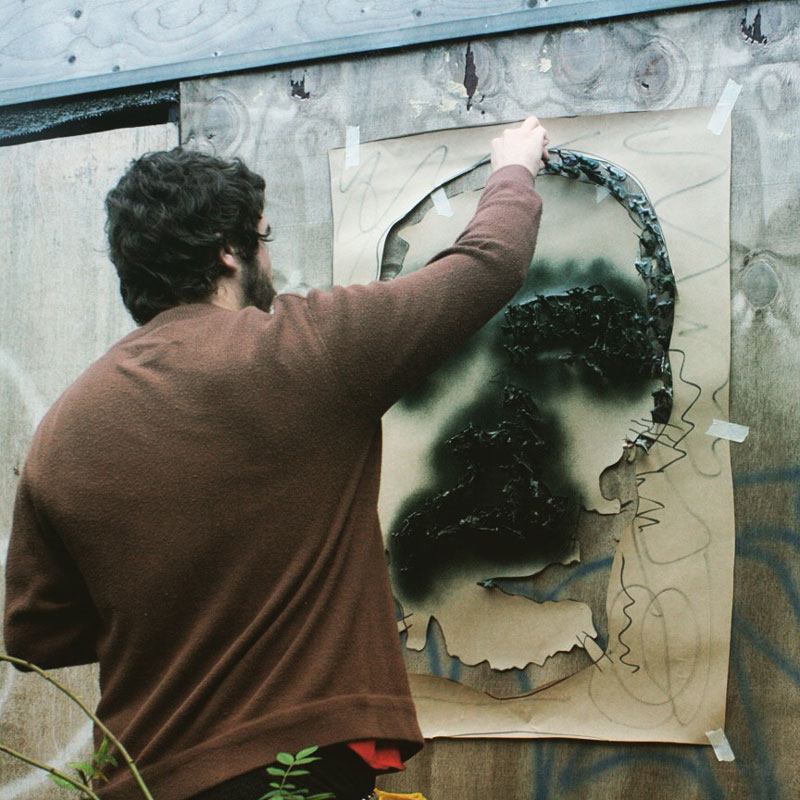
Photo from Jon Reid’s archive
Jon Reid: “It was around that time when the whole Banksy thing really took off. And stencils just seemed like the easiest way to put something up; you don’t have to be able to draw or be good with a spray can. Stencils were the perfect way to get something up quickly and get away”
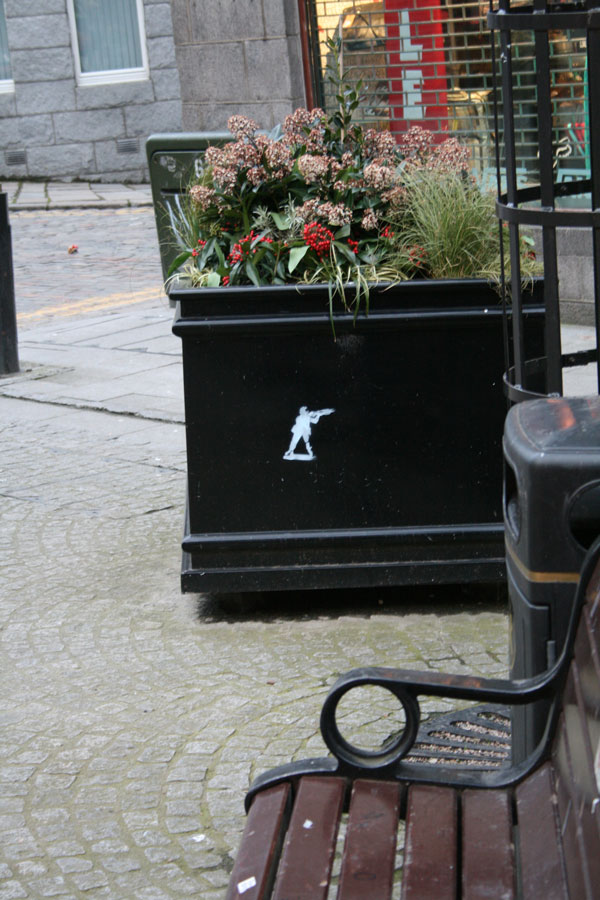
Photo from Jon Reid’s archive
Although there was this lively street art scene, Aberdonians were still relatively unaware of what was happening in the streets of their city. Street art was still an underground movement; a beautiful reward, but only for those who knew where to look.
Jon Reid: “I don’t think Aberdonians even realized what was happening. I have no idea what people would have thought of it back then; if they even have acknowledged it, to be honest. Certainly the police was paying attention: they caught me and my work, I had to go see them, spend a few hours in a cell. I got my fingerprints and DNA taken and had a two-hour interview with a pair of officers. Aberdeen was very strict; I got into all this trouble for literally just a one-color stencil of a Lego brick. The city was very different back then”
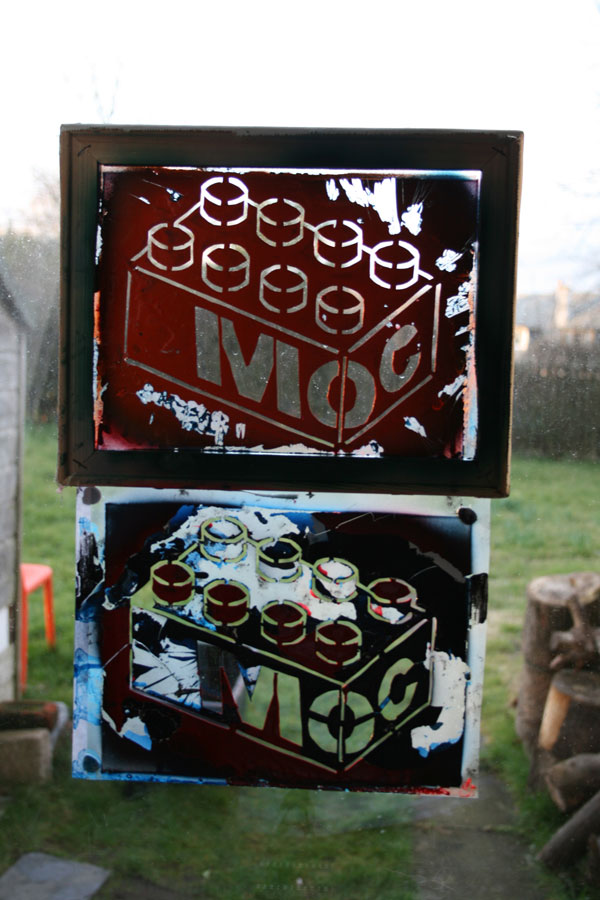
Photo from Jon Reid’s archive
Jon went from having a bounty on his head to producing outstanding street art in his city as the host of the internationally renowned street art festival Nuart Aberdeen.
Somewhere in between all that, Aberdeen had changed a lot. There was Genevieve Davis, who paved the way for a lot of local artists and helped put up many legal walls around the city; there was Mary Butterworth, who embedded art into the streets through the project ‘Painted Doors’; and there were many art galleries, like the Project Slogan Gallery and the Throwup Gallery, that made Aberdeen the never-ending source of art events that Jon has been writing about on his blog for the past decade.
Jon Reid: “There was a community of people that have been very active, and very passionate about stuff. They’ve been making things happen. At first, it has been a bottom-up process, but then Nuart came in and it actually really helped empower these people even more, giving them opportunities to push their efforts even further”
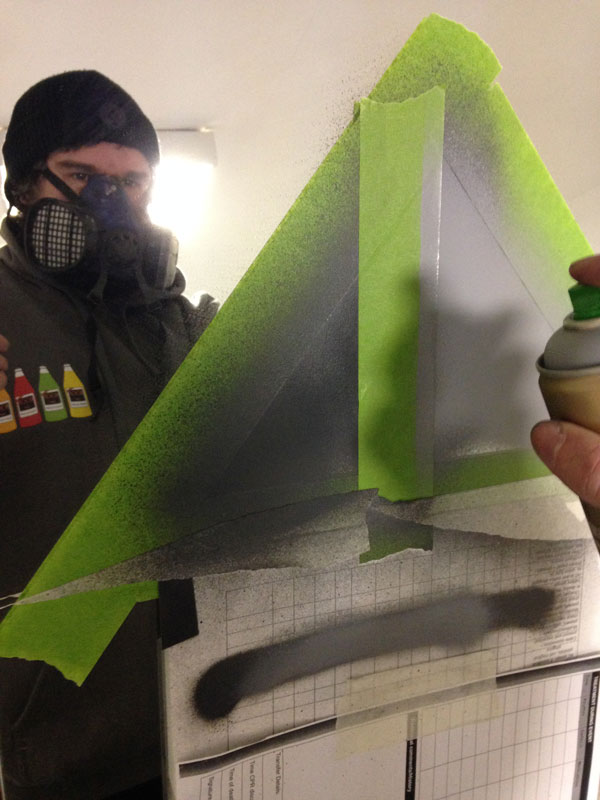
Photo from Jon Reid’s archive
In the first issue of his fanzine “Street Art in Aberdeen”, Jon makes a clear distinction between “before Nuart” and ”after Nuart”. The international urban art festival is such a milestone in the history of Aberdeen’s street art culture. And Jon has been Nuart Aberdeen’s host since its very first event back in 2017.
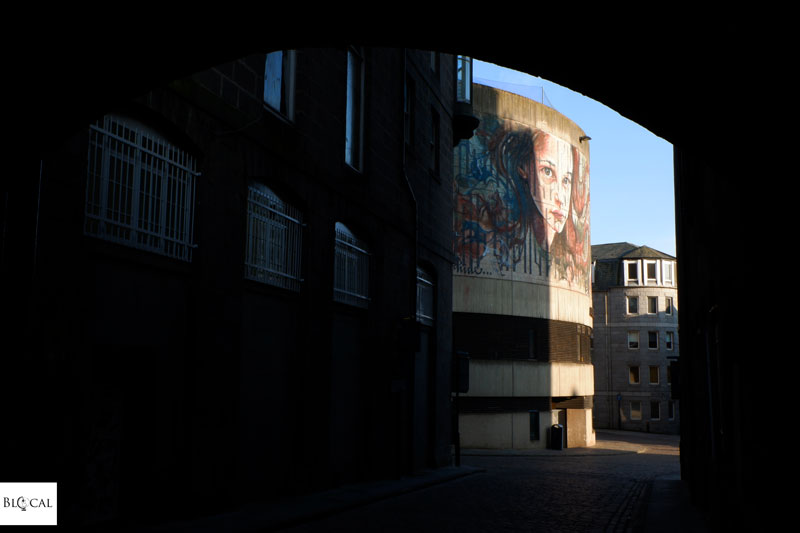
Herakut Nuart Aberdeen 2017
Jon Reid: “I had a folder on my computer filled with photos of potential walls in Aberdeen, which I thought would be incredible for Nuart. Back in 2014, I was visiting Norway with a friend whose parents live in Stavanger, so we combined the vacation with seeing some of the Nuart stuff. It was so inspiring that, back in Scotland, I started documenting Aberdeen’s walls with the idea of getting in touch with the Nuart people. I remember when my partner and I had just started dating when I mentioned to her my idea of getting in touch with the Nuart guys –not even necessarily to invite them over, but just to see if it was something they would be interested in or if they could give me some pointers. And Mary, who is also an artist and runs Aberdeen’s ‘Painted Doors’ project, replied that the Nuart people had already arranged an appointment to visit Aberdeen. And so, there we went to meet Martyn, James, and Marissa when they came for their first visit. I remember saying to Martyn that I’ve been looking at street art for such a long time that I witnessed Bansky’s prints on sale for £100, although I never bought them. To which Martyn said, ‘Well, I did buy all the fucking Banksy prints and that’s how I started Nuart’”
Jon and Martyn instantly clicked and began making big plans. They shared lots of ideas about what art is, who art is for, and how to engage audiences, which all are strong points of Nuart’s mission. They both strongly believe that art should be for everyone.
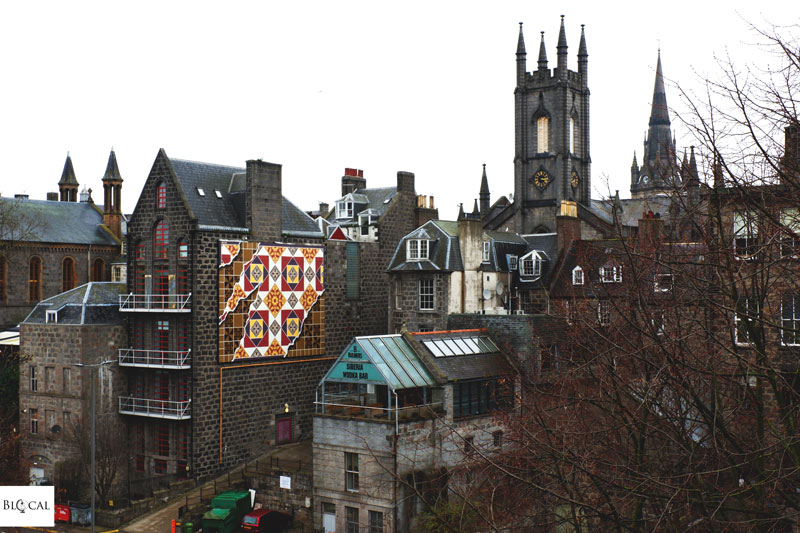
Addfuel Nuart Aberdeen 2017
Jon Reid: “It was exciting. I have been looking at street art from a provincial location in Aberdeen and seeing it through the eyes of magazines and blogs, whereas Martyn was the guy making these things happen. He made street art festivals a thing”
After that first meeting, Martyn realized that there was a lot more going on in Aberdeen than what he saw by working with the tourist board. Jon brought Martyn off the beaten path, where he and his friends used to put up stencils: all across those pure and rough areas where art and culture don’t exist as much as they do in the city center -although those are the places, and the people, that need art the most.
Jon Reid: “What I was doing with the blog, which is helping people to find their own ‘access point’ to art, now I do it for the festival as well, mainly through street art tours that help people understand the deeper meaning of street art. The feedback has always been super positive. For every tour I’ve ever done, people come up and shake my hand. I remember one tour, when a guy came to me while we were walking up to the next mural and he said, ‘You know what, Jon? When my wife told me I was getting up early to attend a bloody art tour I thought ‘what the hell!’ but you are so engaging and enthusiastic about it that now I can’t wait to see what’s next.’ That was the ultimate compliment: someone who wasn’t interested at first, someone who couldn’t be bothered, was eventually able to appreciate what he was seeing. By the end of the tour, he was in front of the pack; he wanted to see more. My role is breaking up the artwork on many different levels. I address questions such as how long it took, what materials the artists used were, what their philosophy and ideology are, etc. At the end of it all, though, I always step away. I’m not telling people what to think, I’m leaving them with a moment to appreciate the art with the knowledge they now have. Also, if you want to ignore everything I said and just see a giant kid climbing up a wall, that’s perfectly fine. If that’s what makes you happy, if that’s what makes you fall in love with your city, then do it! Who am I to tell you what you should or should not like. As Martyn always said, ‘As soon as the brush is down, as soon as the paint can has finished, that artwork belongs to the people’”
Aside from helping engage people with street art, what Jon loves about leading street art tours is that the attendees are usually people from his city.
Jon Reid: “We, of course, get the occasional tourist, but most attendees are fellow Aberdonians – the same people who complain that nothing cool ever happens in Aberdeen. Making them change their mind feels awesome! All I want is for them to acknowledge that our city is beautiful and has a lot to offer. I want to show them that we are incredibly lucky to live here! Only two miles away from the city center, we have one of the most beautiful beaches in the entire UK. We’ve got mountains an hour’s drive away and we’ve got castles all throughout Scotland. The Aberdeen Art Gallery houses artworks by Damien Hirst and Tracey Emin, so the contemporary art scene is pretty interesting, too. Aberdeen has so much to offer, and I love to be the guy who reminds people that we do in fact live in a beautiful city. I also like to stress the fact that we can’t just be passive spectators: if you want something to happen, go and organize it! Be the difference you want to see in the world instead of being the guy who moans about it. People too often expect problems to be fixed by somebody else, but they are the same people to turn around and complain that nothing happens. We go on holidays, we travel to new places, and it’s all fun and exciting, but then we return home and it’s back to the boring and dull lives we’re all too familiar with. But in reality, the places where we live can also be exciting, although it’s easily forgotten about. Every day I do my best to see my hometown with fresh eyes, because the things that we Aberdonians take for granted are gonna be new and fresh to a stranger like yourself”
I am absolutely excited to come back to Aberdeen in a few weeks.
Curious to know what happens at Nuart Aberdeen 2019?
Then subscribe to the 1st-of-the-month newsletter to stay in the loop!
Nuart Aberdeen 2019 runs from April 18th to April 21st
Artists line-up:
Strok (NO) | Axel Void (US) | Ben Eine (UK) | Dotmasters (UK) | Ememem (FR) | Evol (DE) | Hama Woods (NO) | Helen Bur (UK) | Hush (UK) | Jan Vormann (EU) | Julio | Smug (AU) | Vhils (PT)
Check out the Nuart Plus program!
Jon Reid’s street art walking tours will be available both on Saturday 20th and on Sunday 21st
Website: 2019.nuartaberdeen.co.uk
